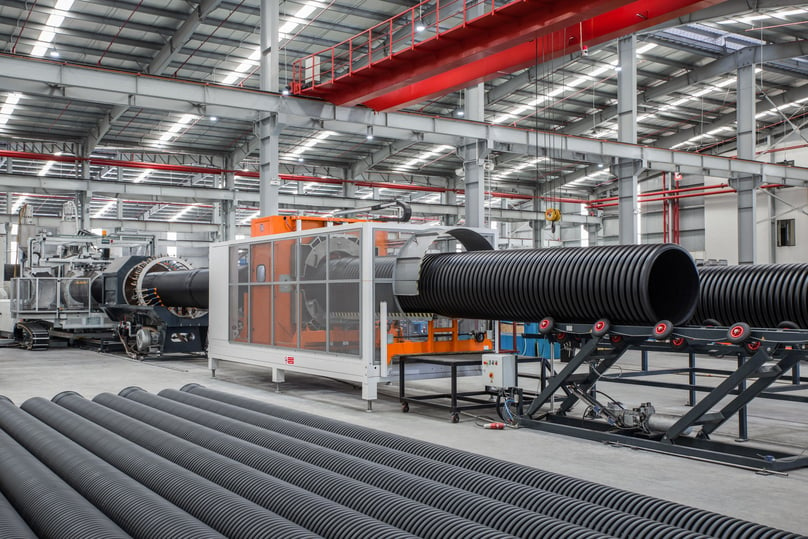The big US news this week has been that Summit Materials and Argos USA are planning to merge their operations. The new organisation will operate six integrated cement plants with a production capacity of 8.4Mt/yr, based on Global Cement Directory 2023 data. The companies say that this will make them the fourth biggest cement producer in the country, at 11.8Mt/yr, based on grinding capacity, and the largest domestically-owned operator. Additionally, the combined entity will also hold just under 5Bnt of aggregate reserves, 224 ready-mixed concrete (RMX) plants and 32 asphalt plants.
The deal is expected to close in the first half of 2024 subject to the usual regulatory clearances and shareholder approval. At this point Argos should own approximately 31% of the new company and Summit Materials’ shareholders will be the majority owner. Although, if we remember anything from the Lafarge-Holcim merger from nearly a decade ago, it is that if the share prices between the two companies diverge too much in the next six months then that proportion may change. In simple terms that split for Argos USA is in the region of where one might expect it to be given that Argos USA made 39% of the combined revenue for both itself and Summit Materials in 2022 and 28% of the combined earnings.
The two companies complement each other well for the purposes of forming a new heavy building materials concern. Summit Materials reported revenue of US$2.41bn in 2022, with 30% deriving from its aggregates businesses, another 30% coming from RMX and about 20% from paving. Cement generated US$341m, or 14%, of total revenue. By contrast Argos USA reported revenue of US$1.57bn in 2022 from a business just concerning cement and concrete. Geographically, Summit Materials’ integrated plants are in the Midwest, in Iowa and Missouri respectively, and its cement terminals follow the Mississippi River from Minneapolis to New Orleans. Notably, it made the point in the merger announcement that the deal would reduce the seasonality of its cement business. Argos USA’s plants and terminals are mostly spaced out in the Southern states with its plants in Alabama, Florida, South Carolina and West Virginia.
It goes against recent trends for a US-based company to be increasing its share in the domestic cement market, although it has resorted to teaming up with a Colombia-based one to do so. Usually it is foreign-headquarted companies making moves in the US. For example, Ireland-based CRH is in the final stages of switching its primary listing to the New York Stock Exchange. Its head Albert Manifold described the US construction market as going through a “golden age” earlier in the year whilst trying to sell the stock market move at the company’s annual general meeting. Meanwhile, there have been various smaller acquisitions such as Peru-based UNACEMs’ agreement to buy the Tehachapi cement plant in California from Martin Marietta Materials in August 2023.
Given the ongoing importance of the North American market for the international cement producers it is not surprising that merger and acquisition activity has been taking place. Each of the four largest US-based cement producers performed well in the first six months of 2023, increasing both revenue and earnings significantly. However, the picture is mixed. The Portland Cement Association (PCA) forecast at the start of 2023 that cement consumption would decline in the second half of 2023 due to a worsening general economic outlook. The downturn was estimated to be brief though as interest rates were expected to dip and infrastructure spending to rise in 2024. Half-year data from the United States Geological Survey (USGS) supported this view as shipments reached an estimated 51.0Mt, a slight decrease from the same period in 2022. The cement companies have made money so far in 2023 partly by raising their prices. Yet, some segments of the residential homebuilding market have also driven demand despite the general economic picture.
One last thing to consider is how much thought was given to the carbon risk of forming a new heavy building materials company in a developed economy in the 2020s. Sustainability receives a mention in Summit Materials’ investor presentation in the form of current achievements such as switching to blended cements or reducing fossil fuel usage but there is no suggestion that any serious investment to curtail process emissions is expected any time soon. However, one could make the case that the enlarged company might benefit from synergistic effects if it were forced to spend more on CO2 emission reduction. This proposed merger concerns two existing organisations teaming up rather than new equity entering the arena. In this context it will be worth noting whether the next cement industry merger or acquisition in the US or Europe will involve existing companies or new entrants.





